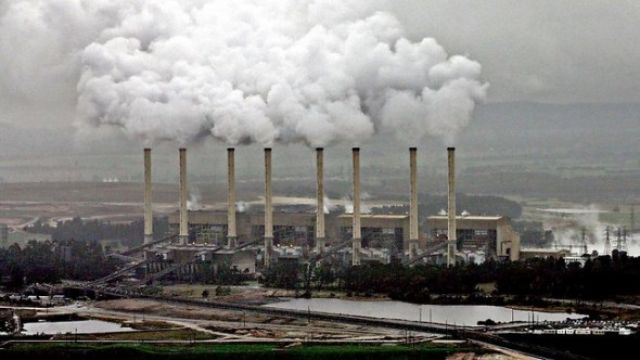
Hazelwood Power Station, Australia’s dirtiest power generator and many decades past its “use by” date, will finally close on March 31.
Hazelwood’s closure is symbolic because of its size, its history and because it provides 20% of Victoria’s power. But technological advances and environmental concerns have finally caught up with it.
In May, majority owner ENGIE’s CEO Isabelle Kocher said the company was reviewing its remaining coal plants one by one and would close those with the most outdated technology.
Hazelwood is Australia’s “dirtiest” power station, meaning it produces the most carbon dioxide for the amount of electricity it generates. At 1.56 tonnes of CO2 for each megawatt hour of electricity, it is 50% more polluting than the average black coal power station in NSW or Queensland. Hazelwood emits 14% of Victoria’s annual greenhouse gas emissions.
The closure of Hazelwood could reduce Victoria’s annual climate pollution by 16 million tonnes — an essential step towards the rapid reduction in greenhouse gas emissions required to avoid the worst impacts of climate change.
Each year, Hazelwood uses 27 billion litres of water and emits 7800 tonnes of hydrochloric acid. It is also one of the top five biggest polluters in the country of toxic fine particulate matter (PM 2.5), which is a significant danger to human health.
Retiring Hazelwood will have immediate health benefits for the local community. Environmental Justice Australia (EJA) said 95% of air pollution in the Latrobe Valley is from burning coal and the pollution emitted from coal-fired power stations causes and worsens asthma, respiratory problems and cancer, especially in children and the elderly.
EJA lawyer Nicola Rivers said: “Every tonne of pollution that is avoided will result in immediate health benefits such as lower asthma rates and fewer hospital visits. The entire Valley’s population of 125,000 will benefit once Hazelwood retires and clean energy like solar and wind take its place.”
It is widely accepted that a government-led plan is needed to manage the phase-out of coal-burning power stations, as part of a comprehensive plan to deal with global warming. Burning coal is responsible for about 50% of Victoria’s climate pollution and more than 30% of Australia’s climate pollution.
The Australian Energy Market Operator has estimated that meeting the current federal climate targets will require the closure of 8700 MW of coal-burning power stations before 2030.
CEO of Environment Victoria Mark Wakeham said: “It is hard to believe that even though Hazelwood is the oldest and most polluting power station in Australia and was first due to shut in 2000, there remains no clear, government-led plan for its closure.
“Australia’s distinct lack of any credible climate policy or national energy plan to phase out the old and invest in the new, has left us at the whims of the market. It’s time for the Federal government and states to work together on a plan to clean up our power supply and support affected communities.”
Voices of the Valley president Wendy Farmer agreed. “Engie’s announcement that it will fully close Hazelwood reaffirms the urgency for a Latrobe Valley Transition plan to be created and implemented. We absolutely do not want to see a thousand people lose their jobs without a strategy for re-employment.
“We have been calling on the state and federal governments to work with the community to create and implement a comprehensive transition plan that keeps people employed and keeps people hopeful for their futures and the future of the Latrobe Valley.”
Hazelwood employs 495 people directly and an average of 300 contractors. Unions, community groups and environment organisations have called on ENGIE to ensure workers receive their full entitlements.
They have also asked other companies that own coal power stations in the region, EnergyAustralia and AGL, to work with ENGIE to implement a “workplace portability” scheme. This encourages older workers across the fleet to take redundancy packages, allowing younger workers at Hazelwood to transfer and remain employed at other power stations.
The Victorian government has already committed $40 million to support economic transition and has indicated that this is just the beginning. The federal government has committed $43 million as a support package for families and workers affected by the closure. ENGIE is under a legal obligation to rehabilitate the mine site and has announced it will retain “up to 250 people … to manage the power station decommissioning and mine rehabilitation”.
The Earthworker Cooperative is setting up Eureka's Future, a renewable energy manufacturing cooperative, in the Latrobe Valley. Through community investment, they have a factory site full of machinery in Morwell, and the skills and know-how to get it up and running. They are asking the Victorian government to install Eureka’s Future solar hot water systems and battery technology in public housing, which would not just kick-start cooperative manufacturing jobs, it would also reduce power bills for low-income households, reduce pollution and upgrade public building stock. It needs donations to start production.
[You can support this great project at this crowdfunding site.]
ike the article? Subscribe to Green Left now! You can also like us on Facebook and follow us on Twitter.